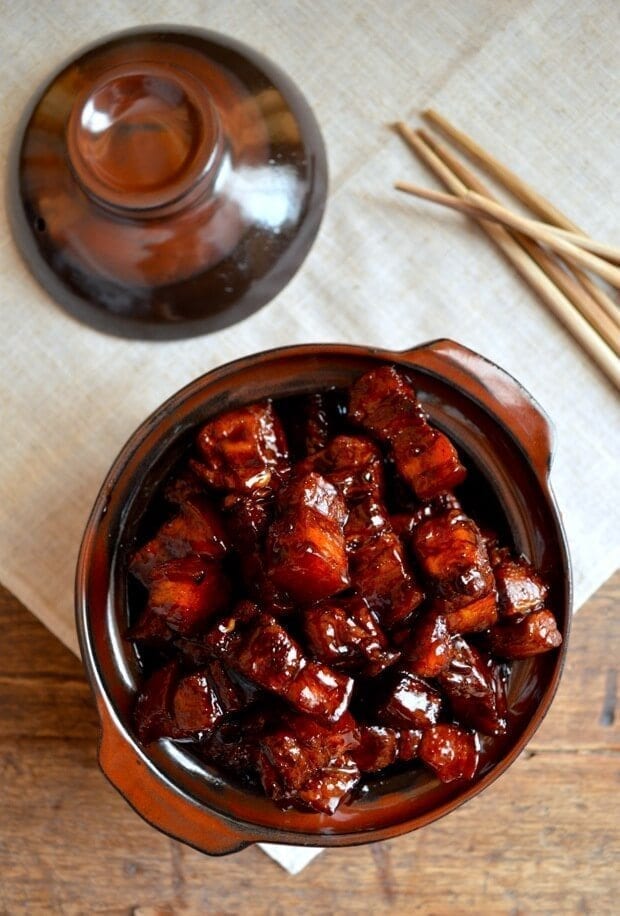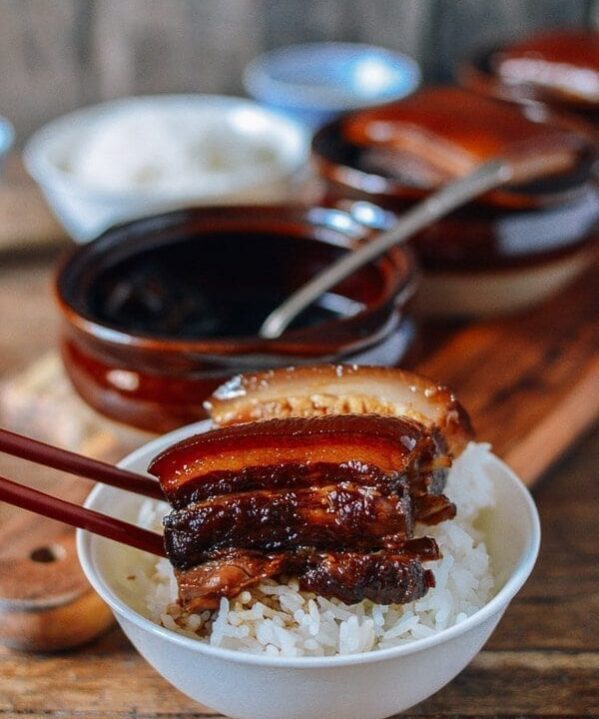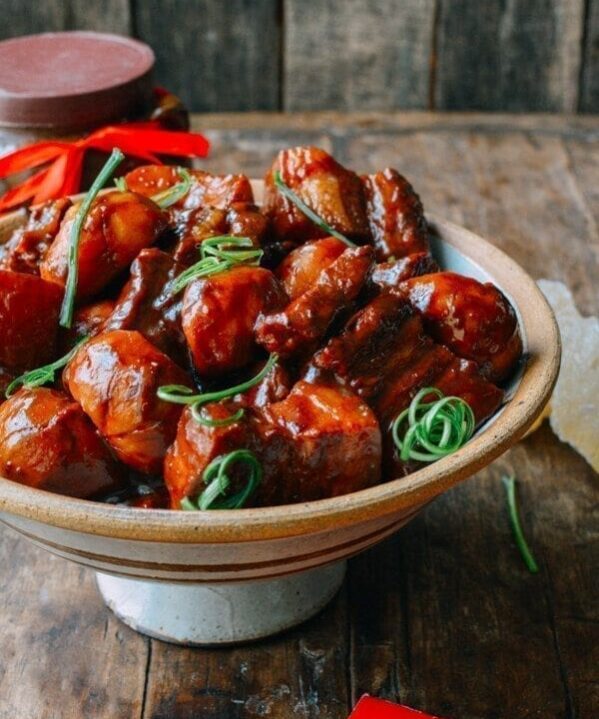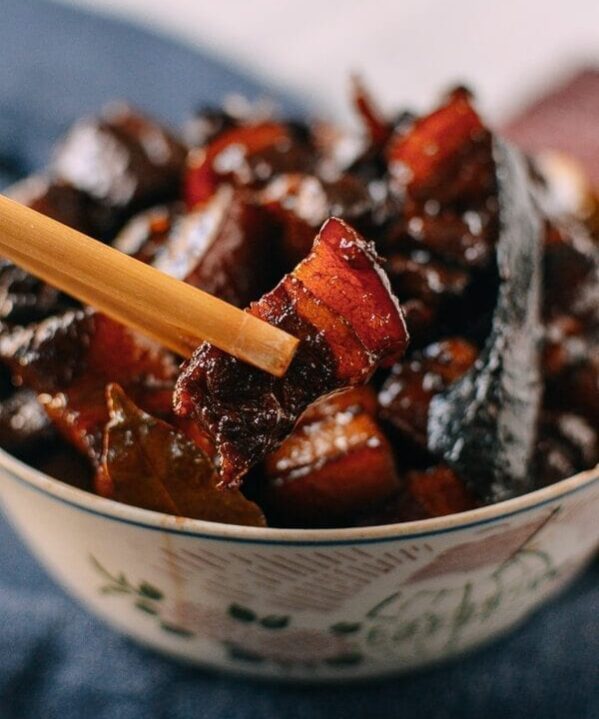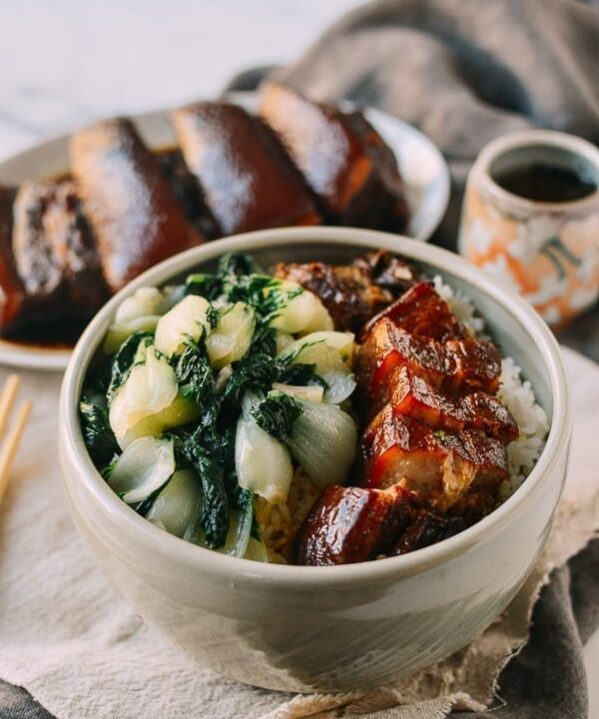As we creep towards middle age, Bill and I try to be healthier and avoid eating too much meat. We’re no health nuts by any stretch of the imagination…we’d eat anything and everything if we didn’t have to worry about the threat of muffin tops.
There are countless times when the two of us walk into a bakery or gourmet shop for the sole purpose of just going in to look. But Shanghai-Style Braised Pork Belly (hong shao rou) is an exception!
So for most of our home-cooked meals these days, we try to stay pretty healthy–lots of veggies. But today, thanks to viewers like you, we’re having pork for dinner (and a vegetable, of course). We’re just giving the hungry public what they want, after all.
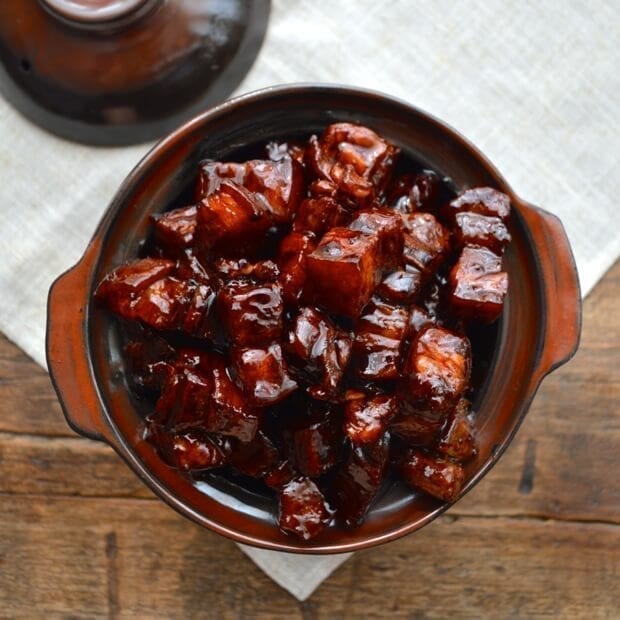
Shanghai-Style Braised Pork Belly (hong shao rou, 红烧肉), or “red cooked pork,” is a very famous dish in China. Everyone knows it, and there are many versions and twists based on the original. Some of the more well-known variations include the addition of squid (sounds odd, but boy, is it tasty), hard boiled eggs, and tofu knots (one of Sarah’s favorites. See my mother’s recipe for Hongshao Rou for this variation).
Other pork belly favorite recipes include Mei Cai Kou Rou, a famous steamed pork belly, Braised pork belly with arrowroot, a Cantonese New Year’s favorite,
And others not so similar but really good are Cantonese roast pork belly and Twice cooked pork belly.
The list goes on, but since I’m from Shanghai, I like to cook the original, un-embellished Shanghai-style version. This shanghai pork belly recipe is designed for two to three people because I’m cooking for three here, but you can certainly double and/or triple the recipe for bigger crowds. You may have to adjust the cooking time accordingly.
The ingredients are very simple: pork belly, oil, rock sugar or granulated sugar, wine, soy sauce, dark soy sauce. That’s right, just SIX ingredients. Crazy, right?
Shanghai Braised Pork Belly: Recipe Instructions
Start by cutting your pork for your Shanghai braised pork belly. Cut the pork belly into 3/4 inch thick pieces.
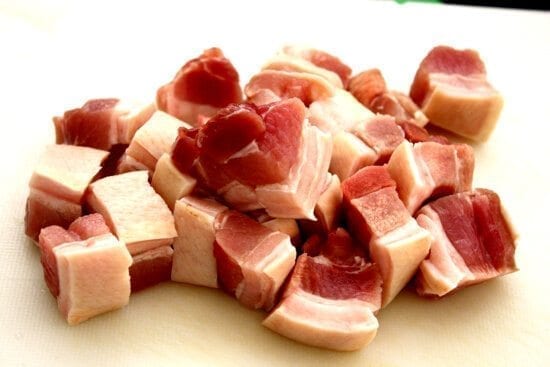
Then bring a pot of water to a boil. Blanch the pork for a couple minutes. This gets rid of impurities and starts the cooking process. Take the pork out of the pot, and set it aside. Discard the water in the wok and clean it out.
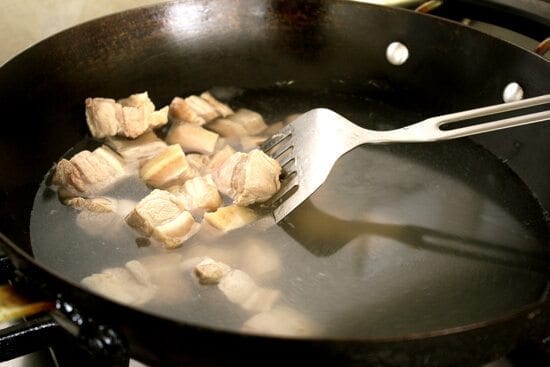
Over low heat, add oil and sugar to your wok. Melt the sugar slightly and add the pork. Raise the heat to medium and cook until the pork is lightly browned.
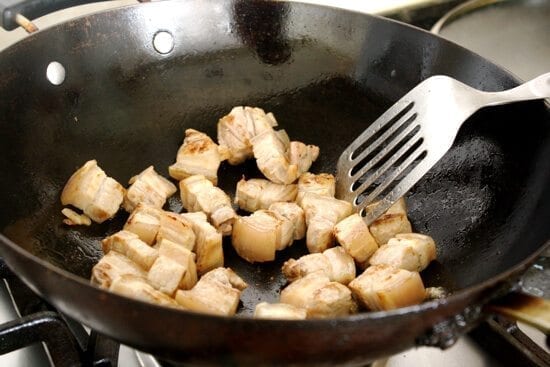
Turn the heat back down to low and add Shaoxing cooking wine, regular soy sauce, dark soy sauce, and water. It’s very important to the color and flavor of this dish that you have both kinds of soy sauce! Just head to your local Asian market, buy a bottle of each, and it will last you a year!
Cover and simmer over medium heat for about 45 minutes to 1 hour until pork is fork tender. Every 5-10 minutes, stir to prevent burning and add more water if it gets too dry. Once the pork is fork tender, if there is still a lot of visible liquid, uncover the wok, turn up the heat, and stir continuously until the sauce has reduced to a glistening coating.
And then, it’s time to eat! Let us know in the comments if you’re interested in any other variations of this dish, and we’ll get right on it. (not that we’re looking for another excuse to make it or anything…)
For entertaining, get one of these clay or earthen pots to serve your Shanghai Style Braised pork Belly (hong shao rou).
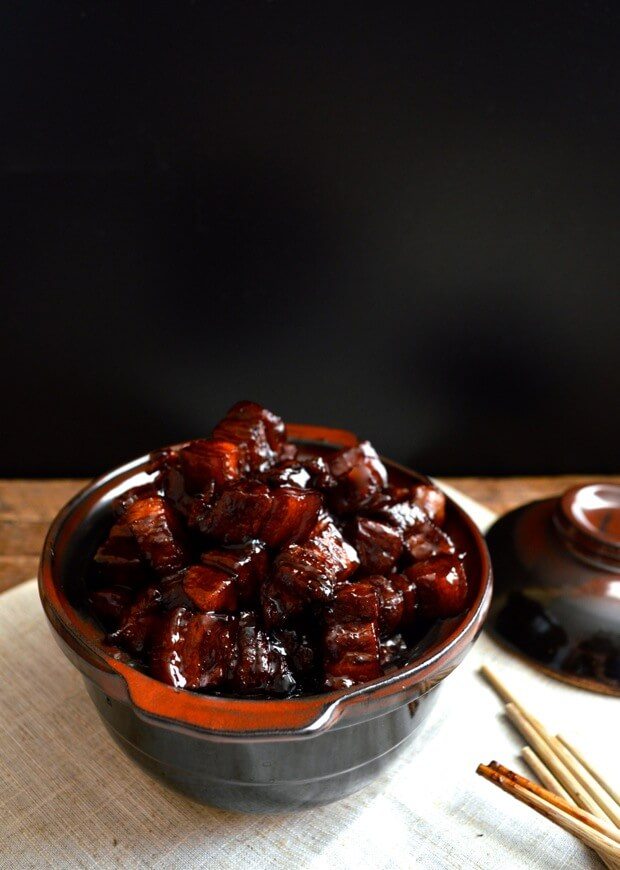
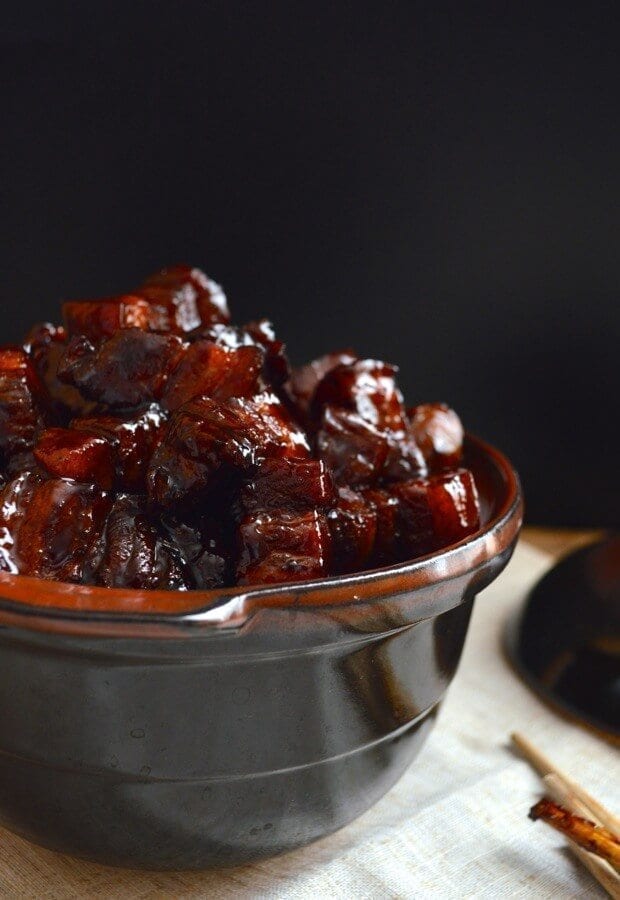

Shanghai-Style Braised Pork Belly (Hong Shao Rou)
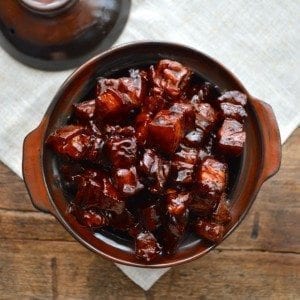
Ingredients
- 12 ounces lean, skin-on pork belly
- 2 tablespoons oil
- 1 tablespoon rock sugar (rock sugar is preferred or you can use granulated sugar)
- 3 tablespoons Shaoxing wine
- 1 tablespoon soy sauce
- ½ tablespoon dark soy sauce
- 2 cups water
Instructions
- Start by cutting your pork belly into 3/4-inch thick pieces.
- Bring a pot of water to a boil. Blanch the pork belly pieces for a couple minutes. This gets rid of impurities and starts the cooking process. Take the pork out of the pot, rinse, and set aside. (You can discard the blanching water.)
- Over low heat, add the oil and sugar to your wok. Melt the sugar slightly and add the pork. Raise the heat to medium and cook until the pork is lightly browned.
- Turn the heat back down to low and add shaoxing cooking wine, regular soy sauce, dark soy sauce, and water.
- NOTE: It’s very important to the color and flavor of this dish that you have both kinds of soy sauce! Just head to your local Asian market, buy a bottle of each, and it will last you a year!
- Cover and simmer over medium heat for about 45 minutes to 1 hour until pork is fork tender. Every 5-10 minutes, stir to prevent burning and add more water if it gets too dry.
- Once the pork is fork tender, if there is still a lot of visible liquid, uncover the wok, turn up the heat, and stir continuously until the sauce has reduced to a glistening coating.
